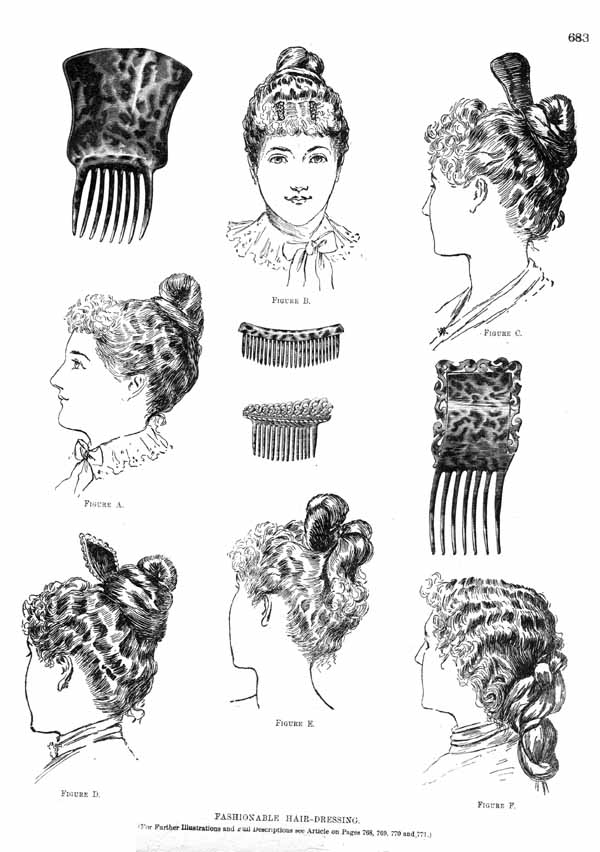Hair
Having long curly hair was seen as Godly in the Victorian era which is why women rarely cut their hair. There was also use of false hair as long hair was the ideal for them. Since the use of make up was disgorged women focused on hair and and a lot of attention was given to creating the ideal hairstyles. The scalp had to be clean as it was a part of the hygiene and also the canvas of creating a good hairstyle and also dirt could stop the healthy growth of the hair. Hair was shampooed once a month and groomed properly. Hairstyles were adjusted for different shapes of the face. 'The Newport knot' was a popular hairstyle. Fringes were worn on the sides of the face or upon the forehead depending on the shape of the face.
Hair accessories were very much in fashion such as combs, jewels, feathers, chains, diadems, flowers, pearls. Topknots were becoming more popular and hairstyles including them were in fashion. For the evening wear women used more jewels and detail in their hair, alongside with different materials such as ribbons and for daytime wear the hair was more toned down with different curls, but less jewels.
The parting of the hair was also played an important part to the hair as it varied depending on the shape of the face and also age of the person. Different types of parting included the hair fully scraped back out of the face, a V parting with hair coming down in a V shape from both sides. For children the hair could be parted from the side and the coiffure, 'the braid could be let down and allowed to hang free from the crown with a ribbon bow at the end.'
Hair also showed status which is why the hairstyle of servants were different to the hairstyles of wealth ladies. Although the same shape and idea that the wealthier women had was followed by servants it was not done carefully and neatly which suggested social status.
The Newport knot.
'http://www.vintagevictorian.com/images/del94dec-p683-figBb.jpg'
'http://www.vintagevictorian.com/images/del94dec-p683hair-a.jpg'
Richard Corson (1965). Fashions In Hair The First Five Thousand Years.
https://www.youtube.com/watch?v=rdnIY5aXSGA
Hairstyles which the women wore in the Victorian era. The hairstyles in the early 1800's were mostly middle parted and simple and as time went on the hairstyles became more detailed and fancy as fashion developed. Some of the hairstyles included buns, plaits, frizzing, curling, padding, pin curls, french twists etc.
There was also a massive use of accessories in the hair such as ribbons, flowers, pearls, headbands.




No comments:
Post a Comment